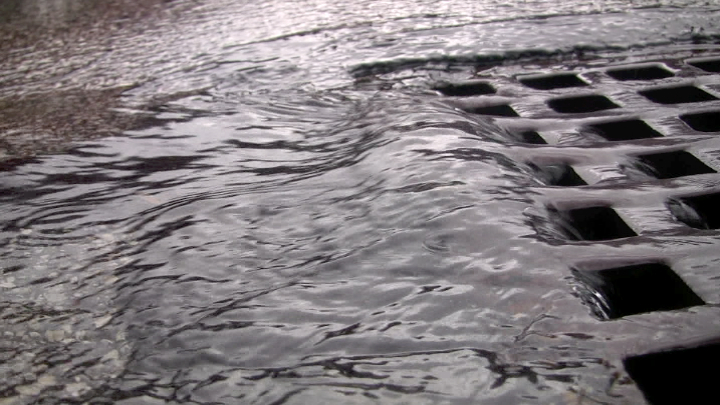
WEATHER: Why melting snow plus heavy rains equals flooding potential across Greater Cleveland
Posted by Jared Shepherd
- 5056 Views
- February 18th, 2014
- in Miscellaneous
- No Comments
With inches of snow still on the ground and warming conditions and rain in the forecast, the combination has potential to increase flooding risks across Greater Cleveland.
In preparation for upcoming wet weather events, we want customers and residents know how and why wet-weather events impact our region’s sewer infrastructure. With snow still standing on the saturated ground, it is possible that the rainfall could affect areas prone to flooding.
Here are some common questions amidst the anticipated warming trend.
How do storms impact sewers? Isn’t that what sewers were designed to handle?
The first concern is the amount of combined sewage entering local waterways. Combined sewage is flow that contains both sewage and stormwater. Here’s why:
In Cleveland, inner-ring suburbs, and many other older communities, sewers were designed in the 1800s as combined sewers to carry both sanitary sewage and stormwater in the same pipe. During heavy rains, these sewers are overwhelmed and combined sewage overflows into the environment. When there is snow-covered ground and the earth is already saturated, the rain is not soaked slowly into the ground; instead, it runs off to sewers, increasing flow volumes tremendously.
Our 25-year Project Clean Lake
program is addressing issues like this long term. But the problems
arose over time, not overnight, and the solutions will take time as
well.Another problem is infiltration and inflow, common problems in aging sewer systems. As sewers age, cracks form and rain and groundwater infiltrates, or rapidly seeps, into them. Another problem is inflow, where downspouts or storm lines are improperly connected to sanitary sewers. As a result, the Sewer District receives and treats this additional wastewater which is above and beyond our customers’ metered consumption.
What types of problems can heavy rain have at the treatment plants? Do you prepare for larger storms?
The Sewer District owns and operates three wastewater treatment plants. These plants typically treat about 200 million gallons of wastewater each day. During heavy rains, the plants might have to treat wastewater in excess of one billion gallons per day.
We are staffed in anticipation of higher flow volumes, but the flows might exceed what our plants can treat. If this occurs, we won’t be able to fully treat the wastewater, but will focus on primary treatment to remove solids.
In addition to the increased volume of wastewater entering our facilities, stormwater runoff impacts our treatment plants because all three plants are located at geographic low-points—Stormwater naturally flows from one community to another towards the lowest point in the watershed.
Can the wastewater treatment plants flood?
It is possible, although it is a very rare occurrence. In anticipation of heavy rains, we ensure that the wastewater treatment plants are adequately staffed and that all personnel is prepared for this possibility.
On February 28, 2011, the Sewer District’s Southerly Wastewater Treatment Plant was flooded by a combination of heavy rains and snow melt.
Where is area flooding likely to occur?
Stormwater runoff, rainfall and snow melt all contribute to flooding, streambank erosion and water quality problems throughout our region. During heavy rain events, local waterways carry more flow than usual and areas near these waterways are likely to flood. As Northeast Ohio has become more developed, and impervious areas have increased, less stormwater can infiltrate into the ground and runs off hard surfaces to sewers and waterways.
If your area is prone to flooding, know who to contact if flooding occurs. It may be your city service department or, if you are a Cleveland resident, Cleveland Water Pollution Control.
NewsChannel5 also offered tips that might help you prepare your home and check your property drainage if you live in a low-lying area.
Could the Sewer District’s Regional Stormwater Management Program help residents?
A decision by the Eighth Circuit Court of Appeals has suspended the Sewer District’s Regional Stormwater Management Program. At this time, funds are not available to solve regional flooding, streambank erosion and water quality problems.


